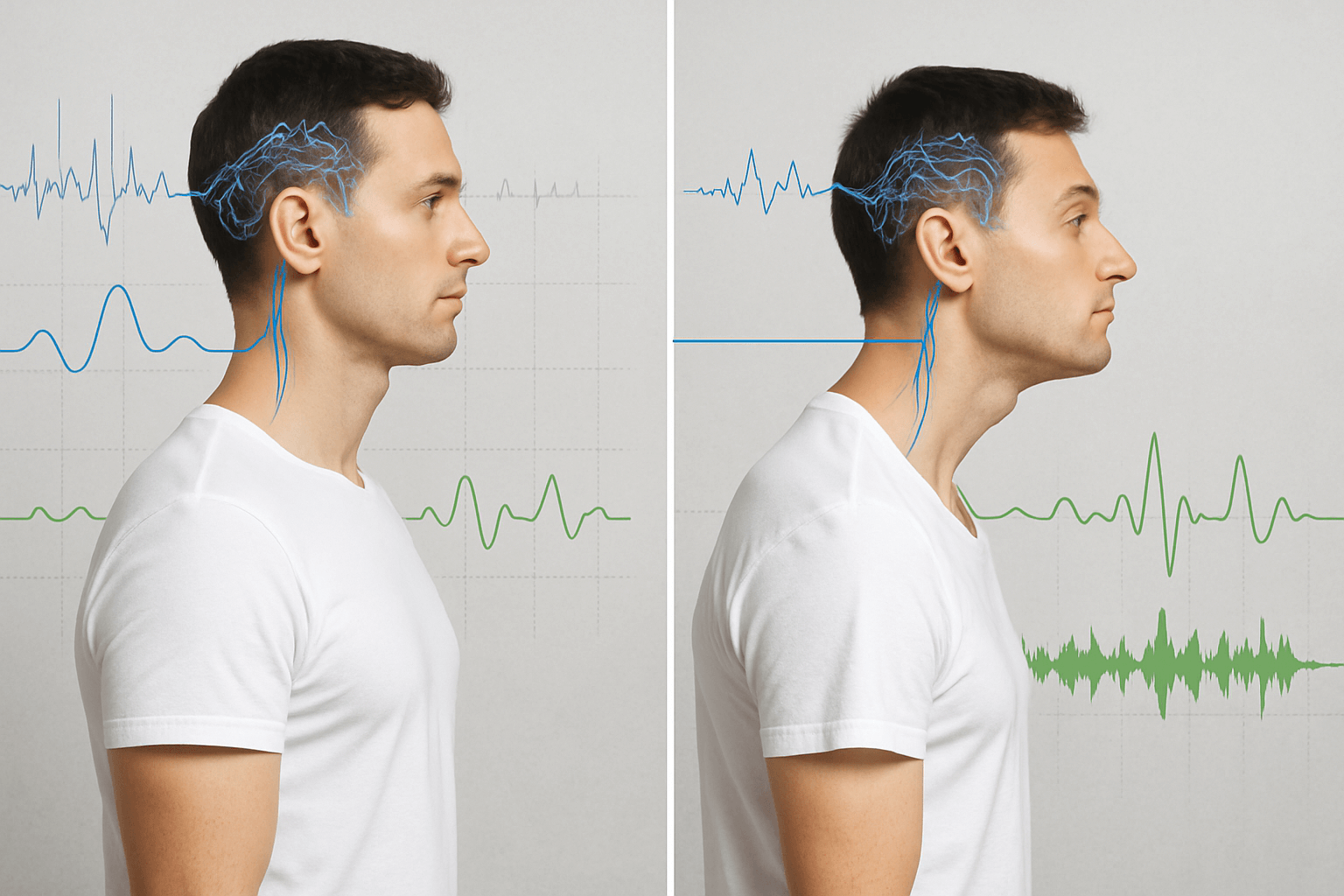Working at a desk for long hours may seem harmless, but it can cause significant postural damage over time. Many people experience neck pain, back discomfort, and stiffness due to prolonged sitting and poor workstation setups. Without proper intervention, these issues can lead to chronic pain, reduced mobility, and even long-term spinal misalignment. This guide explores the dangers of desk jobs and how to maintain good posture at work.
Jump To:
TL;DR Quick Guide
- Desk jobs contribute to poor posture, chronic pain, and long-term musculoskeletal issues.
- Prolonged sitting on an unsupportive seat leads to slouched posture, muscle imbalances, and reduced mobility.
- Common issues include forward head posture, hunched shoulders, and lower back pain.
- Proper ergonomics, frequent movement breaks, and targeted exercises help prevent postural damage.
- Adjusting chair height, monitor position, and desk setup can improve posture and reduce strain.
How Desk Jobs Affect Posture and Health
1. Prolonged Sitting Weakens Muscles
- Sitting for hours on the wrong sort of chair every day can cause your spine to slouch, compressing your organs.
- This abnormal position can then cause misalignments of the skull, spine and pelvis.
- Several areas of your spine become overstressed, leading to stiffness and discomfort.
- Your muscles then compensate by becoming tight or weak e.g. weak glutes and tight hip flexors contribute to poor posture and mobility issues.
2. Forward Head Posture and Neck Strain
- Constantly looking down at a screen causes the head to shift forward, putting stress on the neck.
- This can lead to tension headaches, neck stiffness, and shoulder pain.
- Over time, it can contribute to spinal misalignment and nerve compression.
3. Hunched Shoulders and Rounded Upper Back
- Slouching while typing or leaning toward a screen promotes rounded shoulders and poor upper back posture.
- This posture over works the back muscles while compressing the chest, leading to muscle imbalances such as upper crossed syndrome.
- Long-term effects include reduced mobility, chronic upper back pain, and postural misalignment.
4. Increased Risk of Lower Back Pain
- Sitting improperly places excessive pressure on the lower spine, leading to disc compression.
- Poor lumbar support results in slouching and lower back pain.
- Over time, this can contribute to conditions like herniated discs and sciatica.
5. Reduced Circulation and Energy Levels
- Sitting for long periods slows blood flow, leading to stiffness, swelling, and fatigue.
- Lack of movement decreases oxygen flow to muscles, making them prone to tightness.
- Poor posture and reduced circulation contribute to decreased energy and productivity.
How to Prevent Postural Damage at Work
1. Optimize Your Desk Setup
- Adjust chair height so feet rest flat on the floor, keeping knees below the level of your hips.
- Use a firm seat wedge to reduce posterior pelvic tilt and keep your posture balanced.
- Position the monitor at eye level to prevent forward head posture.
- Keep the keyboard and mouse at elbow height to avoid hunching.
2. Take Frequent Movement Breaks
- Stand up and stretch every 30 to 60 minutes to reduce stiffness.
- Walk around or do gentle mobility exercises to promote circulation.
- Consider using a standing desk or alternating between sitting and standing.
3. Strengthen Core and Postural Muscles
- Strengthening the core, back, and shoulders helps maintain proper posture.
- Include exercises like planks, bridges, and scapular retractions in your routine.
- Stretch tight hip flexors and chest muscles to counteract the effects of sitting.
4. Maintain Proper Sitting Posture
- Sit with your back straight, shoulders relaxed, and feet flat on the floor.
- Avoid crossing legs for long periods, as this can cause hip imbalances.
- Keep the head aligned with the spine, rather than jutting forward.
- Don’t keep your wallet or phone in your back pocket as they disrupt your natural posture.
5. Use Ergonomic Accessories
- A sit-to-stand desk can help vary posture throughout the day.
- A footrest is not needed for most people.
Key Takeaways
- Desk jobs can weaken muscles, strain the spine, and contribute to chronic pain.
- Prolonged sitting on the wrong seat causes poor posture, forward head position, and hunched shoulders.
- Optimizing the workstation and practicing good posture can prevent postural damage.
- Frequent movement, core exercises, and ergonomic adjustments help maintain spinal health.
- Small daily changes improve posture, reduce pain, and boost energy levels.
FAQs
1. How can I improve my posture while working at a desk?
Adjust your chair, desk, and monitor height to maintain proper alignment, and take frequent breaks to move and stretch.
2. How often should I take breaks to avoid postural damage?
Take a standing or movement break every 30 to 60 minutes to prevent stiffness and muscle imbalances.
3. Does a standing desk prevent postural issues?
Standing desks help reduce prolonged sitting, but proper posture and movement are still necessary for spinal health.
4. Can back pain from sitting all day be reversed?
Yes, correcting posture, strengthening muscles, and improving desk ergonomics can help relieve and prevent pain.
5. Is slouching at a desk really that harmful?
Yes, long-term slouching leads to muscle imbalances, joint strain, and spinal misalignment, increasing the risk of chronic pain.






